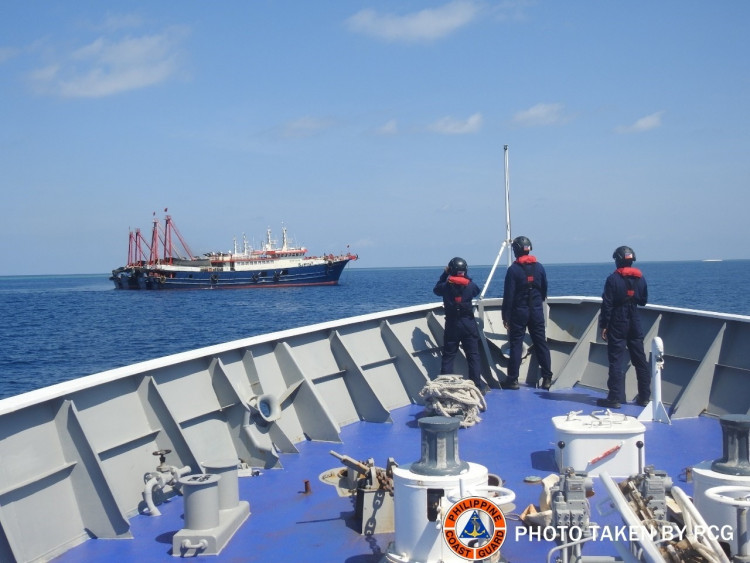In a move that underscores the escalating tensions in the South China Sea, the United States and the Philippines have initiated joint naval exercises. This development comes on the heels of allegations by a local Filipino fishermen's group that Chinese boats obstructed their access to the resource-rich lagoon of the contested Scarborough Shoal.
The joint naval drills, named SAMASAMA, which translates to "together" in Filipino, were inaugurated in Manila on October 2nd. The exercises are scheduled to continue until October 13th. The drills will encompass a variety of training segments, including engineering, logistics, legal concepts, public affairs, and medicine. Additionally, diving and explosive ordinance disposal teams, maritime surveillance aircraft personnel, and naval vessels will conduct exercises focusing on surface and air warfare, maritime domain awareness, and anti-submarine warfare.
This year's SAMASAMA exercise is touted as the largest to date, according to the U.S. 7th Fleet. The drills will witness participation not only from American and Filipino troops but also from military personnel from the United Kingdom, Malaysia, France, Japan, Canada, and Australia. The U.S. will deploy the P-8 Poseidon maritime surveillance aircraft and the Arleigh-Burke class guided-missile destroyer, the USS Dewy. The Philippines will be represented by the Navy's BRP Antonio Luna, while Japan will send the JS Akebono from its Maritime Self-Defense Forces. Canada will participate with the Royal Canadian Navy's frigate, the HMCS Vancouver.
Capt. Sean Lewis, Commodore of the Destroyer Squadron (DESRON) 7, emphasized the significance of the alliance between the U.S. and the Philippines. He stated, "With so many shared values, a security partnership of 77 years, and a history of military collaboration, our alliance with the Philippines enables us to build truly robust training evolutions like this one."
The Philippine Navy revealed that approximately 700 sailors and marines from the country would partake in the exercises. Additionally, personnel from the Royal New Zealand Navy and the Indonesian Navy will be present as observers.
However, the backdrop to these exercises is the ongoing dispute in the South China Sea. A day before the drills commenced, a fishermen's group from Zambales, the nearest land formation to the contested Scarborough Shoal, alleged that Chinese boats had hindered Filipino fishermen from accessing the area. Henrelito Empoc, spokesperson for the Bigkis ng Mangingisda Federation, reported that while Filipino fishermen could approach the Panatag Shoal, Chinese Coast Guard vessels remained on "standby" outside the shoal's lagoon. He further claimed that these vessels would "chase away and block" Filipino fishermen attempting to enter the lagoon, while Chinese fishermen were purportedly permitted to fish there without hindrance.
The Scarborough Shoal, known as Huangyan Dao in China, has been a focal point of renewed tensions between Beijing and Manila. This was exacerbated when the Philippine Coast Guard discovered a floating barrier in the region, allegedly installed by the Chinese maritime militia last month. The Philippines has since removed the barrier and has vowed to eliminate any future obstructions that China might place.






